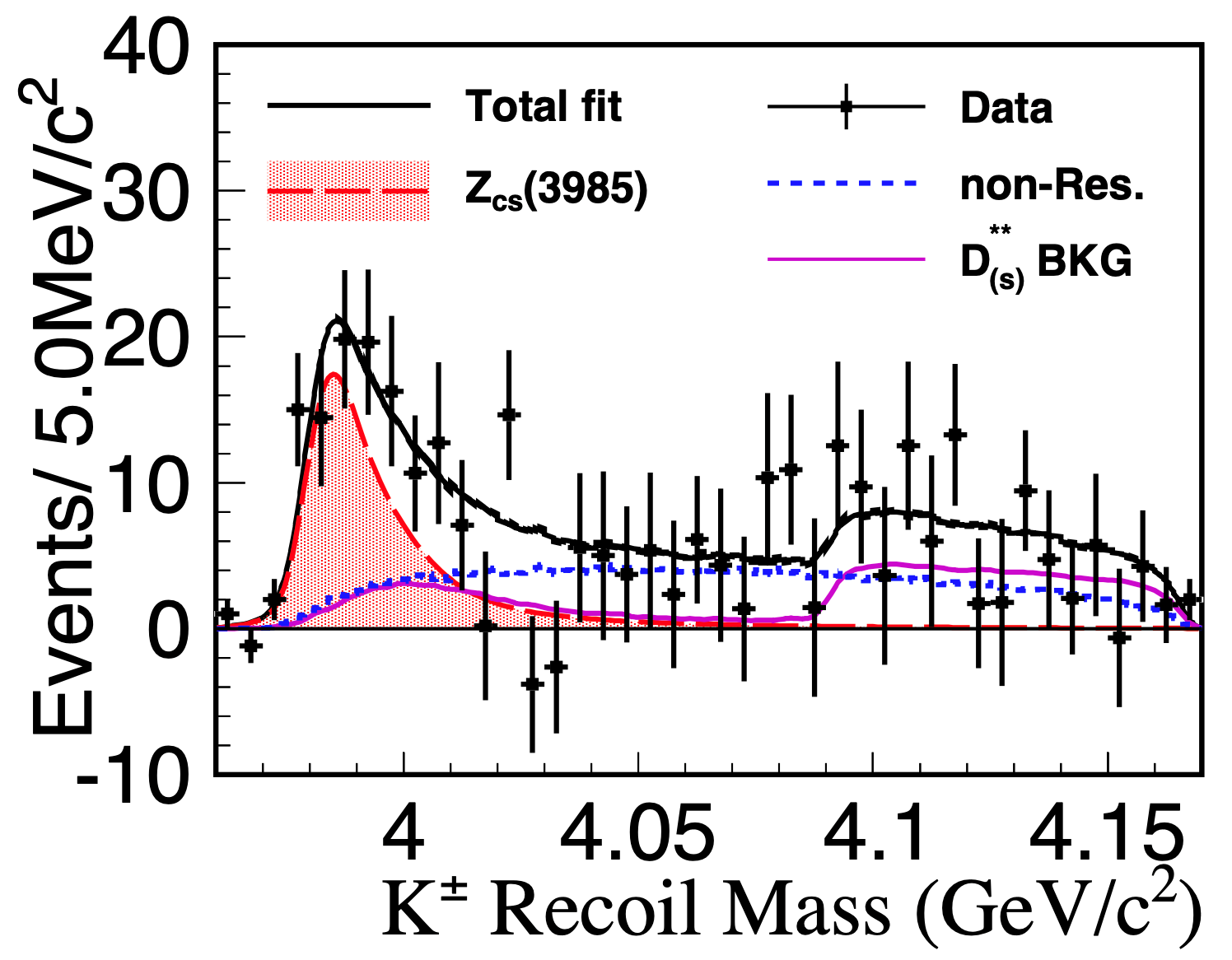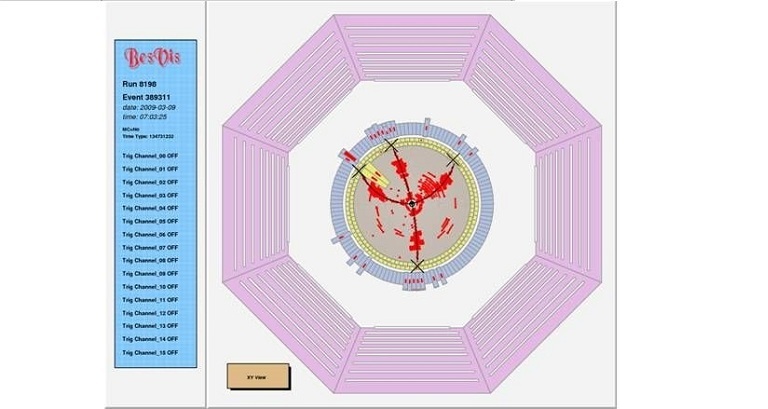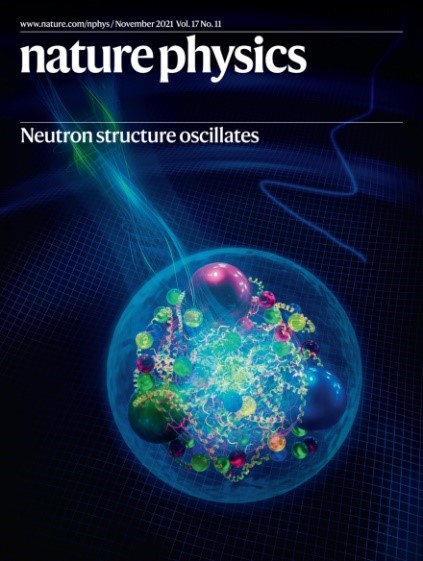Observation of the Zcs(3985) Strange Four-quark Meson: The first hidden-charm tetraquark state with non-zero strangeness
In the March 12, 2021 issue of Physical Review Letters, the BESIII collaboration reports the discovery of an exotic multiquark structure, dubbed Zcs(3985), that is produced in the process of e+e-→K+(Ds-D*0+Ds*-D0) at an e+e- center-of-mass energy of 4.68 GeV. Zcs(3985) is observed to decay to a charged strange-charmed meson plus a neutral charmed meson, i.e., Ds-D*0+Ds*-D0 , and has a mass of 3.98 GeV/c2. This is the first candidate for a tetraquark meson containing hidden-charm with non-zero strangeness. This paper was selected as an “Editors' Suggestion” for that issue of the journal and was prominently featured on the APS synopsis website.
Studies of exotic hadron states, i.e., those that contain more valence-quark constituents than the conventional three-quark baryons and two-quark mesons, provide unique access to details of the non-perturbative effects and color confinement mechanisms in QCD theory. The existence of hidden-charm tetraquarks with non-zero strangeness, noted as Zcs, was predicted by many theoretical models, but until now, no definitive experimental observations have been reported.
The BESIII discovery emerged from analyses of data sets taken at five center-of-mass energy points ranging from 4.628 GeV to 4.698 GeV in 2020 with a total integrated luminosity of 3.7 fb-1. Using a novel partial reconstruction method that relies on the detection of the charged kaon and oppositely charged Ds meson, events corresponding to e+e-→K+(Ds-D*0+Ds*-D0) were identified by a distinct peak at D*0 mass in the K+Ds- recoil mass spectrum. After removing random-combination backgrounds, a clear enhancement was seen near the Ds-D*0 and Ds*-D0 mass thresholds that could not be attributed to any known conventional excited (strange-)charmed mesons. Therefore, the hypothesis of the presence of an exotic state Zcs(3985) in the Ds-D*0 and Ds*-D0 mass spectrum was introduced and found to fit the observed excess very well. A total of 127 Zcs(3985) decays to Ds-D*0 or Ds*-D0 were observed with a global significance of 5.3 standard deviations. The Zcs(3985) has one unit of charge, one unit of strangeness, and couples strongly to Ds-D*0 or Ds*-D0 , a set of properties that can only be satisfied by a minimal ccsu four-quark substructure. Hence, it is a strong candidate for the predicted open-strange charmonium-like tetraquark.
A search for Zcs was among the prominent physics motivations, proposed in the BESIII white paper published in 2020, for increasing the center-of-mass energy reach as part of the BEPCII upgrade. The Zcs discovery is the first major new BESIII result made possible by the success of the collider upgrade program, and represents an important milestone in the collaboration's program to investigate and understand the underlying physics associated with the spectrum of the hidden-charm tetraquark states. A major derivative from this quest would be an improved understanding of non-perturbative effects in QCD theory.
The Zcs(3985) observation represents a significant breakthrough that opens up a new dimension of the tetraquark meson spectrum. Curiously, Zcs(3985) production is more pronounced at center-of-mass energies around 4.68 GeV than at nearby higher or lower energies, which indicates that this energy may be of particular interest. More BESIII data spanning the 4.68 GeV energy region is needed to thoroughly explore the Zcs production mechanism, measure its spin-parity quantum numbers, and search for its neutral Zcs counterpart as well as heavier Zcs siblings.
Further reading:
PRL publication: https://journals.aps.org/prl/abstract/10.1103/PhysRevLett.126.102001
INSPIRE entry: https://inspirehep.net/literature/1830518

Contact Information
Mr. GUO Lijun
ljguo@ihep.ac.cn

